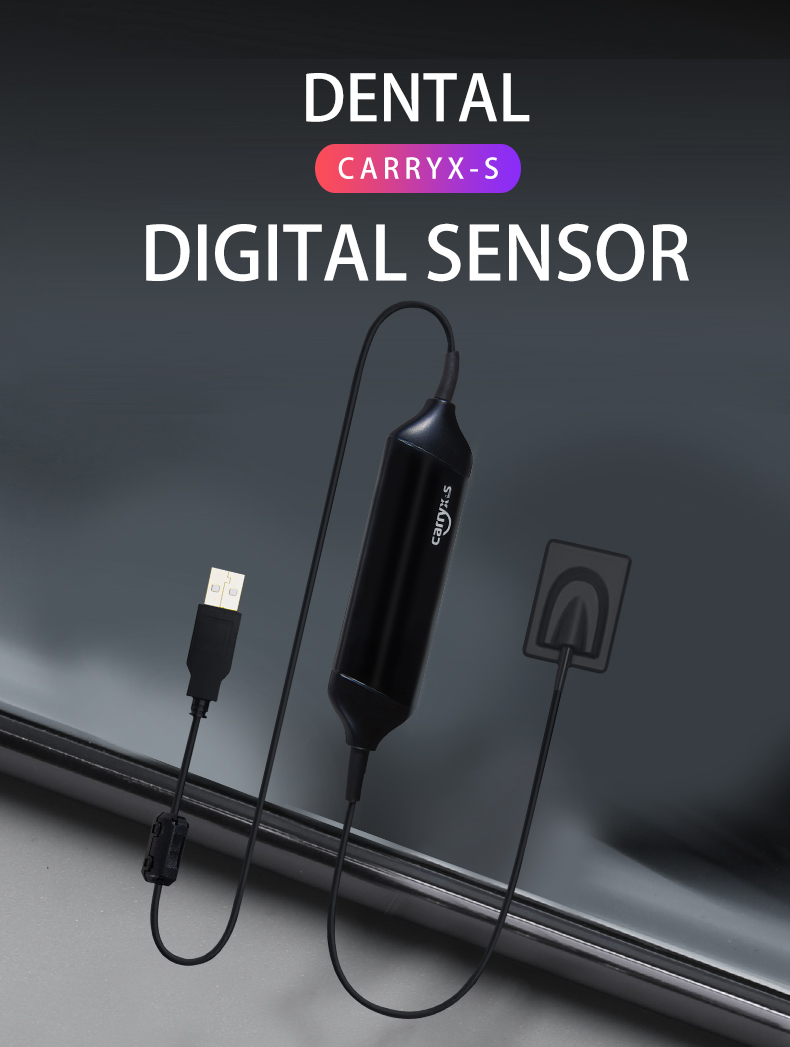In modern dental medicine, the application and development of digital technology is becoming more and more extensive. Among them, digital sensors and portable X-ray machines are one of the commonly used tools. Digital sensors and portable X-ray machines can be used for dental radiographic diagnosis of patients in the oral cavity. Handheld dental x-ray machines have different modes, tooth positions and exposure times, and digital sensors with imaging x-ray image processing software. This article will be divided into four parts to introduce the use methods and skills of digital sensors and portable X-ray machines.
Part 1: What are digital sensors and portable X-ray machines?
A digital sensor is a device used to take X-ray images of teeth in the mouth. The advantage of a digital sensor is that it produces high-quality images, and it is safer and faster because it typically produces much lower amounts of radiation than traditional film x-rays. Digital sensors can be connected to computers and are widely used in dental clinical practice.
A portable x-ray machine is a small, hand-held device used to take x-rays inside the mouth. Compared with traditional X-ray machines, it is more flexible and portable. Portable X-ray machines usually have different modes, tooth positions and exposure times, and doctors can set them according to their needs. Portable X-ray machines are often used with digital sensors.
Part 2: How to use the portable X-ray machine
Before using a portable X-ray machine, the doctor must first understand the patient's dental disease and the position of the tooth that needs to be photographed. Doctors can then set the exposure time and other parameters of the portable X-ray machine according to the patient's needs. When filming, the doctor should place the device in the correct position, make sure it is aimed at the tooth to be filmed, and is at an appropriate distance from the mouth.
When a doctor uses a portable X-ray machine, multiple pictures of the same tooth should be taken from different positions at one angle to ensure an accurate diagnosis. In addition, care should be taken to use protective measures, such as gloves, face shields, and goggles, to protect doctors and patients from radiation.
Part 3: Functions and usage of digital sensor software
Digital sensors are often paired with specialized imaging X-ray software. These software can process and analyze X-ray images to help doctors accurately diagnose dental problems of patients. The functions of digital sensor software usually include image enhancement, nonlinear blur processing, background compensation and noise reduction, etc.
When using a digital sensor, the doctor needs to place the sensor correctly on the teeth to be photographed and connect it to the computer. Then, the doctor can select the shooting angle according to the need, and execute the shooting. In the resulting images, doctors can use digital sensor software to process and analyze the images for accurate diagnosis.
Part 4: How to get clear dental X-ray images
In order to get clear dental X-ray images, doctors need to pay attention to the following aspects:
1. Correct equipment position and angle: The doctor should ensure that the equipment is placed correctly and the angle is set correctly when taking X-ray images.
2. Correct exposure time and other parameters: Doctors should adjust exposure time and other parameters as needed to ensure image quality and accuracy.
3. Correct use of digital sensor software: When using digital sensors, doctors should understand the various functions of the software and use them reasonably to help enhance images and get better diagnostic results.
4. Pay attention to protective measures: Doctors should pay attention to protective measures when using portable X-ray machines to protect patients and themselves from radiation damage.
In conclusion, digital sensors and portable X-ray machines are important tools in modern dentistry. Doctors can combine scientific and technological means and clinical experience to use these devices for dental X-ray diagnosis of patients in the oral cavity, so as to obtain accurate diagnosis results and better treatment effects.
Post time: Mar-13-2023

